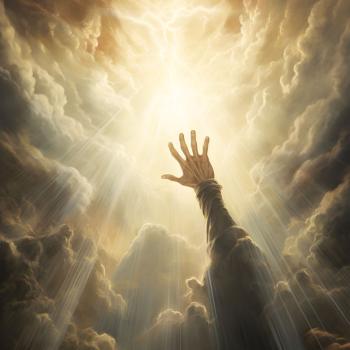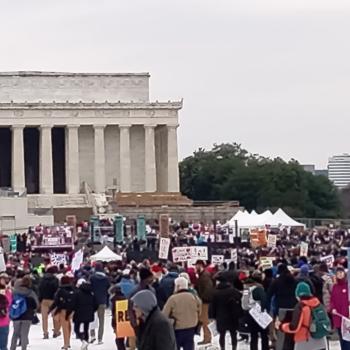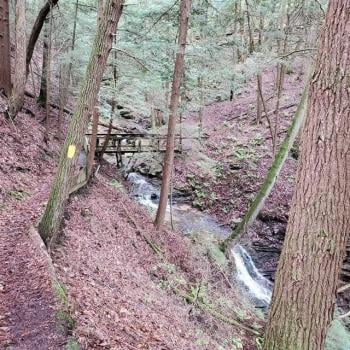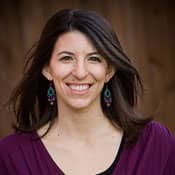 At Journey, we are seasonal lectionary followers. We fall in step with our mainline friends during Advent, Lent, and other days such as Pentecost. At other times of the year, we give ourselves quite a bit of freedom in our topics. You can feel free to call us grocery store lectionarians or fair-weather appointed-reading friends. We are, and we're fine with that.
At Journey, we are seasonal lectionary followers. We fall in step with our mainline friends during Advent, Lent, and other days such as Pentecost. At other times of the year, we give ourselves quite a bit of freedom in our topics. You can feel free to call us grocery store lectionarians or fair-weather appointed-reading friends. We are, and we're fine with that.
It's always an interesting creative process to come up with topics and series. The positive side is that you have nothing but open possibilities before you. The negative side is that you have nothing but open possibilities before you! It can be both freeing and overwhelming. I come to our planning meeting with ideas, but I'm typically surprised at how those ideas are encountered, changed, or even sometimes rejected. It's pretty rare that I walk in and say, "Let's do a series on X" and everybody agrees. More often, I'll say, "Here are three ideas that could possibly be turned into a series," and then we spend a good hour deciding which one, if any, has potential. The following week's meeting is then spent hammering out the details of the Idea Survivor until we have an outline for our series. Sometimes, we think we've settled on something only to realize we have very little to say about it, and the process begins again. Often our decision process is just a matter of talking about what seems most relevant to the community at the moment. What are people going through? What are people reading and talking about? What has been going on that may need addressing? Once we know that, we can start finding natural places to connect our last series with what we want to do next.
One of the greatest benefits of doing this in the context of community members (rather than just a staff meeting) is that you get pretty accurate feedback regarding how the previous series have been received. We know what has gone well and what hasn't, because between all of us, we've heard comments from a good cross-section of the community. Maybe most importantly, this includes the people who would never comment directly to me on a Sunday night. There's less distance between what I think I'm communicating and what we hear is being communicated. I feel this has been a different experience than when I've worked in larger churches or more structured church environments, where it seems easy to slip into assumptions on what is really hitting home with people and when their eyes have glossed over. Also, I've found that our community voices keep me practical, whereas I'd regularly swoon toward abstract-theological-ramblings. If those talks don't get people anywhere, I hear about it. It's a helpful safety net.
For our process this time around, we immediately batted down a number of ideas. It was raining "No's." So we turned to context: what have we been talking about that has gained traction, and how can we continue that? In Advent we talked about Jesus' birth as bringing the seeds of the Kingdom, so it was a natural progression for us to think about how those seeds came to grow in his own life. And since our fall has been focused on spiritual practice in daily life from a number of angles, we wanted to spend some time looking specifically at what Jesus practiced and what he did. So, during this stretch of weeks between Epiphany and Lent, we've decided to do a series on the Life of Jesus, emphasis on life.
Though we (obviously) spend a significant amount of time on Jesus' teachings, in this series we wanted to emphasize his humanity, his life and his actions. This may be a Bible Belt thing, but some versions of the Gospel we hear around these parts sound something like, "Jesus was born for us so that he could die for us so that we could live forever." In addition to being primarily a self-centered claim (us, us, us), this Gospel Cliffs Note version acts as if Jesus launched straight from the manger up to the cross with nothing of value in between. This series is about valuing the years in between, the season of Jesus' life when he grew in wisdom and stature, when he started to live into his calling, when he showed us what his teachings meant by putting them into action.
This time, coming up with the idea was fairly easy after that first rain shower of No's, but choosing texts and deciding in what order to structure them was far more difficult. Do we stay in one section of a Gospel and run through a series of stories from that unifying Gospel writer's perspective, or do we pick stories that work best with our theme, regardless of which Gospel they represent? After some grueling discussion, we decided on the latter, but then we were faced with the daunting question: which stories? We made a list of several, and through a conversation on what actions really painted a full picture of Jesus, we narrowed it down.
We'll be tackling some diverse and challenging texts in the weeks to come, from the story of boy Jesus in the Temple to the healing of the Gerasene demoniac. Throughout, our focus will be on what Jesus' humanity has to teach us about our own. And maybe that's because Western theology, despite its assertion that Jesus is both fully human and fully God, has spent the vast majority of time talking about the God part and hardly ever discussing the human part. The human part is not only fascinating but also really instructive for those of us humans trying to follow him. At least, we think so. If not, I'm sure we'll hear about it.
2/2/2011 5:00:00 AM





